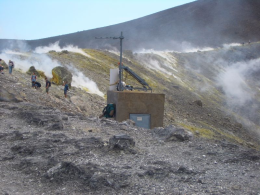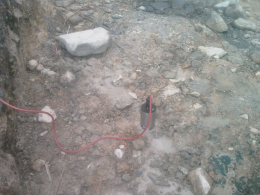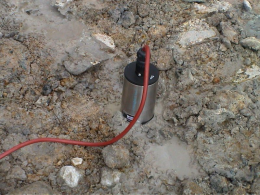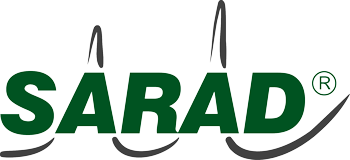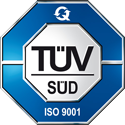Geological explorations, volcanological and earthquake research
Due to its properties as an inert gas, radon is one of the most important geological tracers. In the range of tectonic faults or geological anomalies, the radon gas is measured in the soil or on its exit points. Changes in the concentration point at changes that take place deeper in the earth crust. Radon can also be used as a tracer to explore underground transportation mechanisms of water or gas.
The soil gas nearly always contains thoron likewise what requires the ability to measure radon and thoron separately. Due to its short half-live time, the thoron can only arrive from the direct surrounding to the measuring point and, therefore, is unsuitable as a tracer. Therefore an instrument equipped with semiconductor detector and alpha spectroscopy will be required.
Nearly always there are correlations to meteorological and other influencing factors. But only the inclusion of these influence factors and more tracer gases such as methane, hydrogen sulphide or carbon dioxide as well as parameters such as the discharge from springs will deliver reliable and robust results.
All the measurements must be continuously performed over very long periods. During this time, the permanent activation of the radon measuring chamber must not result in a rising underground by the long-lived radon daughter Po-210. This fact also requires a real alpha spectroscopy.
Typically the points of use are in non-urban regions without infrastructure and often with extreme environmental conditions. As diverse as the exploration itselves is the required equipment.
High requirements result from the above:
- Scalability, i.e. inclusion of additional sensors and facilities for sampling
- Additional measures against condensation
- Robust against heavy climate changes and corrosion
- Low power consumption and flexible power supply for autarkic operation
- Easy configuration by the user even in remote operation
- Flexible configuration of data transfer routes from the station to the central
- Easy integration in complex measuring networks
For decades, SARAD has provided support for the most important projects worldwide in the range of earthquake and volcanological research. The DACM platform has been developed as a result of the experience of many years. This platform is the heart of our RTM 2200.
Thanks to its freely available universal interfaces, the instrument can be modified for nearly every application. This comprises both the control of complex sampling systems and the integration of several sensors (gases, meteorological factors etc.). The configuration can also be changed later by the customer himself. The instrument is designed for the power supply by solar panels. In addition to the internal radon chamber you can install more radon measuring facilities such as the extremely robust soil gas probe.
Measuring stations always require an individual adaptation to the place of use. SARAD offers complete casing or cabinets resp., even for the outdoor operation, into which the RTM 2200 instrument can be installed together with the air conditioning system possibly required, condensation prevention, data transfer equipment, power supply, water sampling and other components.
